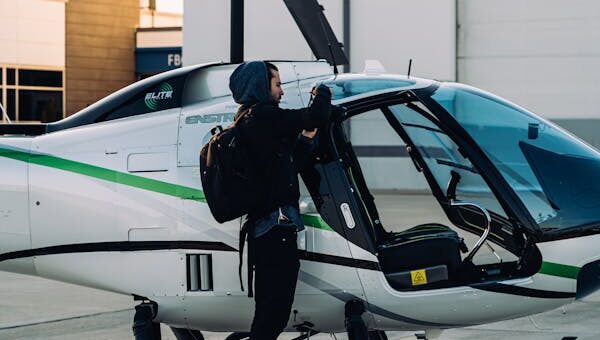
Introduction
Aircraft leasing is the backbone of modern airline fleet strategy. While passengers may marvel at the aircraft they board, most are unaware that the airline likely doesn’t own the plane. Instead, the aircraft is leased from a third-party lessor. This practice allows airlines to maintain flexible, cost-effective fleets while adapting to market conditions.
This article explores the world of commercial aircraft leasing, covering its economic benefits, operational rationale, and the players that shape this dynamic market. Whether you’re an aviation enthusiast or an industry professional, understanding this topic offers deep insight into airline economics.
1. Why Airlines Lease Instead of Buy
1.1 Financial Flexibility and Cash Flow
Purchasing a commercial aircraft can cost between $90 million to $450 million depending on the model. Leasing avoids this enormous upfront investment.
Benefits of leasing:
- Preserves cash flow for operations
- Enables rapid fleet growth without capital expenditure
- Avoids long-term debt obligations
Instead of locking in capital for decades, airlines can allocate funds to marketing, route expansion, or maintenance.
1.2 Strategic Fleet Management
Leasing allows airlines to match fleet size to market demand.
Examples:
- Seasonal demand: Airlines can lease additional planes for peak seasons.
- Trial markets: Airlines can test new routes without long-term commitment.
- Tech updates: Easier to replace outdated aircraft with newer, efficient models.
This agility has helped low-cost carriers and startups scale quickly and exit markets without financial burden.
2. Types of Aircraft Leases
2.1 Operating Leases
The most common type used by airlines, an operating lease is like renting.
Characteristics:
- Short- to mid-term (2–12 years)
- Off-balance sheet for lessees
- Full maintenance often remains airline’s responsibility
Operating leases offer flexibility and are ideal for managing fleet cycles and short-term capacity boosts.
2.2 Finance Leases (Capital Leases)
These resemble traditional financing or ownership.
Key features:
- Longer duration (often matching aircraft life)
- On-balance sheet
- Lessee assumes most risks and rewards
Finance leases are preferred when airlines want more control and possibly own the aircraft later.
| Lease Type | Duration | Balance Sheet Impact | Ownership End Option |
|---|---|---|---|
| Operating Lease | 2–12 years | Off-balance sheet | Rare |
| Finance Lease | 10–25 years | On-balance sheet | Common |
3. Who Are the Lessors?
3.1 Global Aircraft Leasing Giants
Aircraft leasing is dominated by a few large players.
Major lessors include:
- AerCap (Ireland)
- SMBC Aviation Capital (Japan)
- Air Lease Corporation (USA)
- Avolon (Ireland)
These companies own hundreds to thousands of aircraft and lease them globally.
3.2 Role of Sale-and-Leaseback Agreements
In a sale-and-leaseback, an airline sells its owned aircraft to a lessor and leases it back.
Advantages:
- Releases capital
- Retains aircraft in operation
- Simplifies balance sheets
Many airlines used this tactic during COVID-19 to access cash while maintaining operations.
4. Economic Impact on Airlines
4.1 Cost Structure and Risk Management
Leasing changes how airlines manage costs and risk.
Cost benefits:
- Predictable monthly payments
- Avoidance of depreciation costs
- Lower maintenance obligations for newer aircraft
Risk reduction:
- Minimize risk of owning obsolete technology
- Easier to adjust fleet size post-pandemic or recession
This helps maintain financial agility, especially for low-cost carriers.
4.2 Profitability and Return on Investment (ROI)
Leasing enables higher return on equity and ROI by limiting fixed assets.
Example:
- An airline with mostly leased aircraft shows higher profit margins per dollar invested compared to one that buys aircraft outright.
| Model | Cost (USD) | Monthly Lease Estimate | Ownership Notes |
| Boeing 737 MAX | ~$100M | $300,000–$400,000 | Popular with lessors |
| Airbus A320neo | ~$110M | $350,000–$450,000 | Widely leased |
5. Leasing Trends and Future Outlook
5.1 Growing Demand in Developing Markets
As air travel expands in Asia, Africa, and Latin America, leasing offers a gateway for regional carriers.
Drivers:
- Lack of capital for outright purchase
- Faster market entry
- Easier fleet scaling
Leasing companies are targeting startups and regional carriers with tailored solutions.
5.2 Technological Advancements and ESG Factors
Environmental, social, and governance (ESG) considerations now influence leasing.
Trends include:
- Preference for newer, fuel-efficient aircraft like A321XLR or 737 MAX 10
- ESG-focused lease agreements
- Lessors offering carbon offset options
Lessors are playing a growing role in decarbonizing aviation by controlling access to newer technology.
Conclusion: Leasing as the Engine of Airline Strategy
Commercial aircraft leasing has revolutionized the economics of aviation. It offers financial flexibility, operational agility, and strategic advantages that purchasing cannot match. Airlines of all sizes rely on leasing to respond to market changes, introduce new technologies, and manage costs effectively.
Whether through short-term operating leases or long-term finance leases, the right strategy can transform an airline’s trajectory. As aviation evolves, so too will the role of leasing in building resilient, modern fleets.